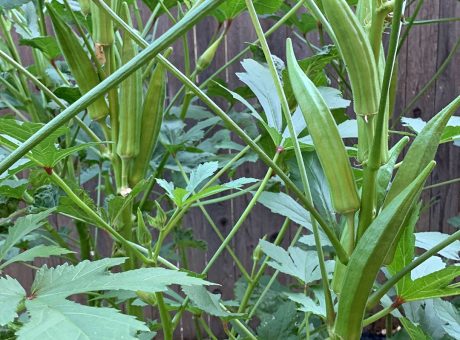
HOW TO GROW PUMPKIN LEAVES FOR FOOD
Most people in the United States don’t know that Pumpkin leaves are edible. Pumpkin leaves are best for food when they are young and tender. Instead of waiting for the pumpkin leaves to mature, you can start picking them and their yellow flowers before pumpkin fruits even start growing. People from African countries eat pumpkin leaves as part of their main meal, including in Malawi, where I am originally from.
PLANTING PUMPKIN SEEDS FOR LEAVES
Make sure your seeds are dry before planting them if you have retrieved them from a pumpkin at home. If you are buying them from the store or Amazon, they usually come dry already.
Before planting pumpkin seeds, prep your soil. I use compost soil to make sure the soil is fertile. If you have manure, you may put that as well. You may have to buy organic plant food if your soil is not healthy.
Plant one seed of pumpkin about one inch deep in the soil. Space the planted seeds about three or four inches apart.
Make sure you don’t plant your pumpkin seeds too close to other plants because the vines spread out rapidly. To control this, put raised sticks or wires inside the garden for the vines to climb up.
Water about two times a week when newly planted. Don’t overwater the plant—pumpkin plants do not grow well with too much water. When the plant has grown and spreading vines, you can water once a week, but if the weather is too hot, water every time you see the soil is drying.

ORGANIC & NATURAL WAYS TO CARE FOR PUMPKIN PLANTS
Look out for leaves that turn yellow or appear to be affected by diseases. Cucurbit powdery mildew (PM) is a disease affecting pumpkin leaves (Wei-Li Guo et al., 2018).
To naturally treat parts of the pumpkin plant affected by powdery mildew, equally mix water and milk then spray on both sides of the affected leaves. You can also buy organic plant fungicides in most garden shops, especially online.
Remove yellow leaves from the vine.
NUTRITIONAL BENEFITS OF PUMPKIN LEAVES
According to Webmd and Healthline, the following are some of the benefits of the pumpkin plant:
- The pumpkin plant has antioxidants and they are good for the skin and immune system;
- Vitamins A helps with good eyesight, solve heart issues, and lowers the risk of prostate and lung cancer;
- Vitamins C and E, as well as iron and folate, strengthen the immune system;
- It’s a protein vegetable;
- Low cholesterol and sodium;
- Beta-carotene helps to reduce the risk of cancer and improves your skin;
- The actual orange fruit has high potassium which helps prevent high blood pressure, diabetes, and heart diseases;
- Pumpkin seeds have serotonin which promotes good sleep and makes you feel good, they also improve the bladder and help with heart issues, and the seeds improve cholesterol in postmenopausal women.
HARVESTING PUMPKIN LEAVES FOR FOOD
Harvest pumpkin leaves while they are young and tender. Usually, the small leaves are younger. Don’t cut off the whole plant—let the remaining leaves and vine continue growing and producing more leaves and pumpkins.
You can harvest the yellow flowers too and cook them together with the leaves.

PREPARING PUMPKIN LEAVES BEFORE COOKING
Wash the pumpkin leaves well. Starting from the stem, peel the stem and follow the strands through the leaf spines to remove small spikes. These are the areas where the spikes are more protruding. It seems like a daunting task but they peel off easily.

Photo: Pumpkin leaves with ground peanuts.
QUICK RECIPES OF PUMPKIN LEAVES
Pumpkin leaves taste slightly sweeter than most dark green vegetables. For example, they are sweeter than Kale. There are a few ways you can cook and eat pumpkin leaves. Pumpkin leaves can be a substitute for collard greens or turnip greens in most recipes.
1- Pumpkin leaves with ground peanuts: Put in a pot, chopped pumpkin leaves, tomatoes, onions, ground peanuts, and salt to taste. Simmer until soft and tender. See the link for detailed cooking instructions.
2- You can also eat raw pumpkin leaves in salads. Choose only the youngest leaves as they’ll be the most tender.
4- Soup: In Nigeria, some make Ugwu Soup using pumpkin leaves.
5- Simmer the pumpkin leaves with onions and tomatoes until soft and tender. Sprinkle salt and/pepper to taste.
6- Simmer the pumpkin leaves until soft and tender. Put in a strain to drain water. In a pan or pot, fry onions and tomatoes with olive oil (you can add garlic if you wish), then add the pumpkin leaves and stir for a minute or two.
7- Dried pumpkin leaves can be put in soups, sauces, salad, or fried with tomatoes and onions.




